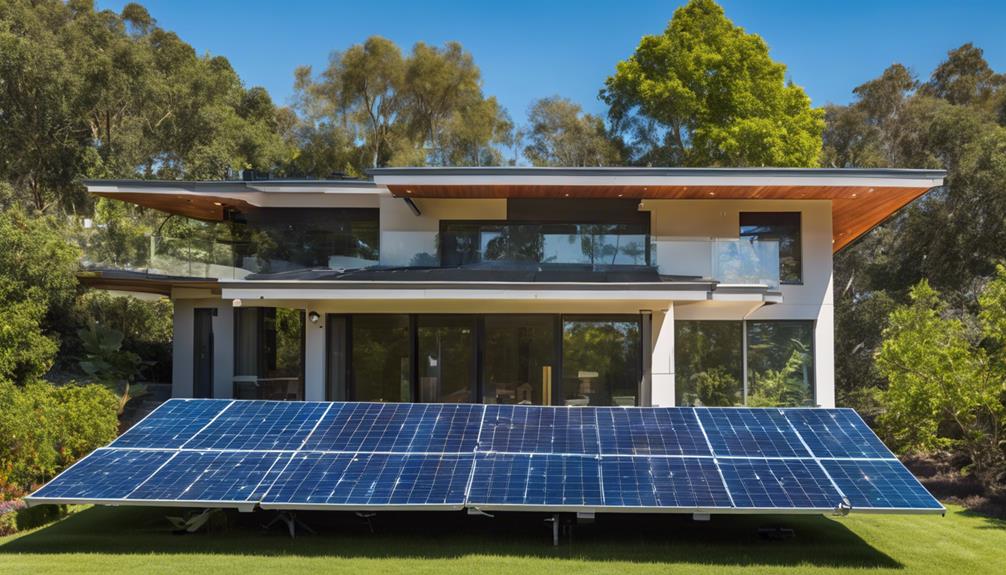
In recent years, the popularity of renewable energy sources has surged, with solar power taking the lead. Homeowners are increasingly turning to solar panel kits for home as a viable solution to reduce energy costs and minimize their carbon footprint. This comprehensive guide will explore the benefits, components, and considerations of solar panel kits, providing you with the knowledge needed to make an informed decision.
What is a Solar Panel Kit for Home?
A solar panel kit for home typically includes all the necessary components to set up a solar energy system. These kits can vary in size and capacity, catering to different energy needs. Generally, a solar panel kit consists of solar panels, an inverter, mounting hardware, and wiring. Some kits may also include batteries for energy storage, allowing homeowners to use solar power even when the sun isn’t shining. The primary goal of these kits is to help homeowners harness solar energy efficiently.
The Benefits of Installing a Solar Panel Kit for Home
There are numerous advantages to investing in a solar panel kit for home. First and foremost, solar energy can significantly reduce your electricity bills. By generating your power, you can lower your reliance on the grid, leading to substantial savings over time. Additionally, solar energy is renewable and clean, contributing to a sustainable future. Many homeowners also appreciate the increase in property value that comes with solar panel installations. Furthermore, various government incentives and tax credits can make the initial investment more affordable, encouraging more households to consider solar power.
Understanding the Components of a Solar Panel Kit
To effectively utilize a solar panel kit for home, it’s essential to understand its components. The primary element is the solar panels, which convert sunlight into electricity. Most kits come with either monocrystalline or polycrystalline panels, each with its own advantages. The inverter is another critical component, as it transforms the direct current (DC) generated by the panels into alternating current (AC) for household use. Mounting hardware is necessary for securing the panels to your roof or ground, while wiring connects all components to ensure a seamless flow of electricity. Some kits may also include batteries, providing backup energy storage for nighttime use or cloudy days.
How to Choose the Right Solar Panel Kit for Your Home
Selecting the right solar panel kit for home can be overwhelming, given the variety of options available. Start by assessing your energy needs. Calculate your average monthly electricity consumption to determine the size of the solar system required. Next, consider your roof space and orientation. Ideally, solar panels should face south in the Northern Hemisphere for maximum sunlight exposure. It’s also essential to research the quality and efficiency ratings of the solar panels and inverter included in the kit. Reading customer reviews and seeking recommendations can help you make an informed choice.
The Installation Process of Solar Panel Kits
Installing a solar panel kit for home can be a DIY project or completed by professionals. If you choose the DIY route, ensure you have the necessary tools and safety equipment. The installation process typically involves mounting the panels, connecting the inverter, and wiring everything together. It’s crucial to follow the manufacturer’s instructions carefully to avoid any issues. If you’re not comfortable with electrical work, hiring a licensed contractor is advisable. Professional installation can guarantee that the system is set up correctly and safely, maximizing its efficiency and longevity.
Maintenance Tips for Solar Panel Kits
Once you’ve installed your solar panel kit for home, proper maintenance is essential to ensure optimal performance. Regularly inspect your solar panels for dirt, debris, or shading that may obstruct sunlight. Cleaning the panels occasionally with water and a soft brush can help maintain their efficiency. Additionally, monitor your system’s performance through the inverter’s monitoring system, which can alert you to any issues. It’s also wise to schedule periodic professional inspections to check the wiring, inverter, and overall functionality of your solar energy system.
Cost Considerations for Solar Panel Kits
The cost of a solar panel kit for home can vary significantly based on the size, brand, and included components. On average, homeowners can expect to spend between $5,000 and $15,000 for a complete system, including installation. However, it’s essential to consider potential long-term savings on energy bills, as well as available state and federal incentives that can offset initial costs. Additionally, financing options, such as solar loans or leasing, can make solar energy more accessible for homeowners looking to make the switch without a substantial upfront investment.
The Future of Solar Energy and Home Solar Panel Kits
As technology advances, the future of solar energy looks promising. Innovations in solar panel efficiency, battery storage solutions, and smart home integration are making solar panel kits more effective and user-friendly. Homeowners can expect to see improvements in energy generation and storage capacity, making solar power an increasingly practical option for residential use. As the world moves toward sustainable energy solutions, investing in a solar panel kit for home not only benefits the environment but also positions homeowners at the forefront of the energy revolution.
In conclusion, a solar panel kit for home offers an excellent opportunity for homeowners to take control of their energy consumption while contributing to a greener planet. By understanding the components, benefits, and considerations of these kits, you can make an informed decision that aligns with your energy needs and financial goals. Embracing solar power is not just an investment in your home; it’s an investment in the future of our planet.





